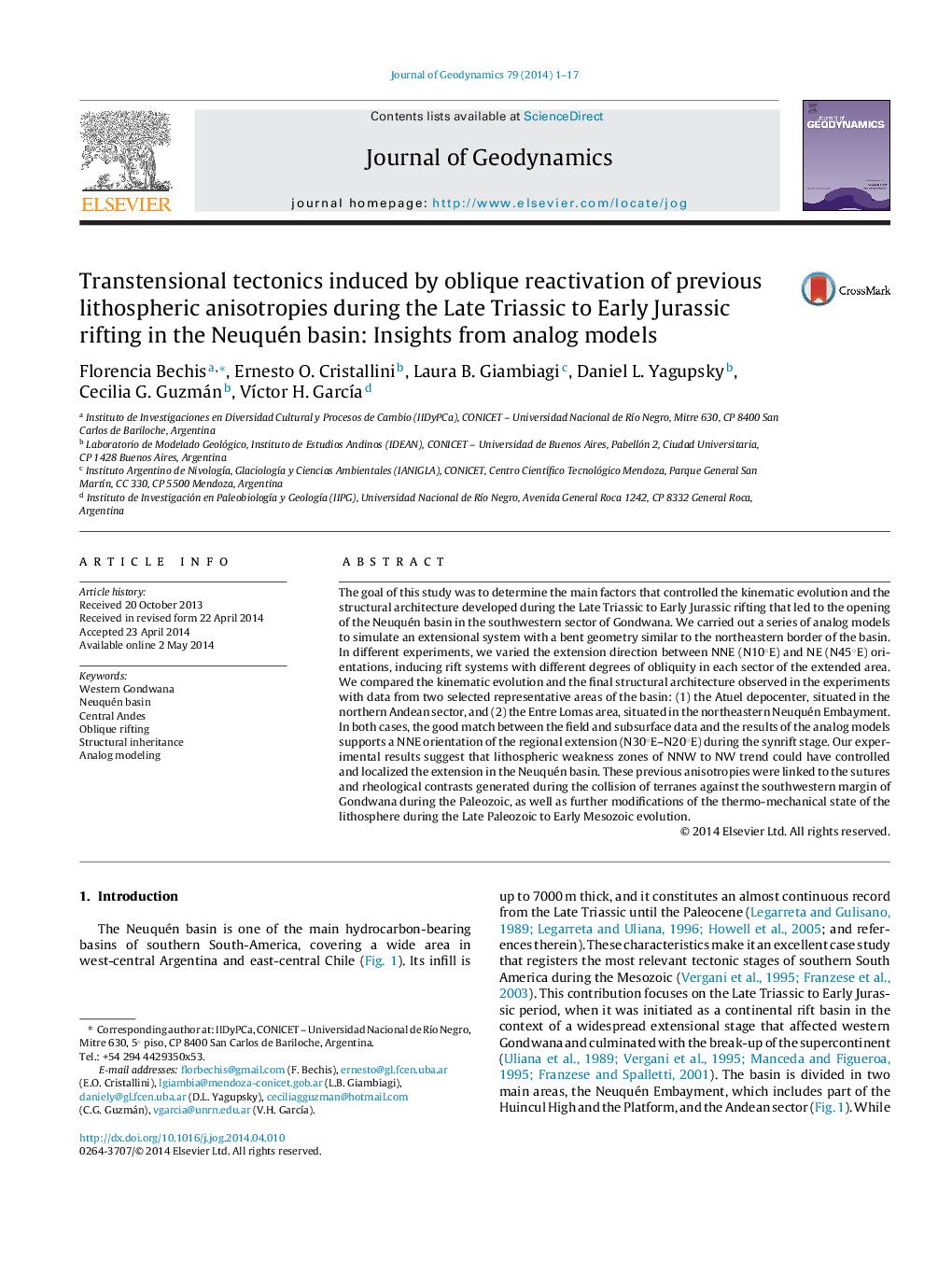| کد مقاله | کد نشریه | سال انتشار | مقاله انگلیسی | نسخه تمام متن |
|---|---|---|---|---|
| 4688098 | 1635770 | 2014 | 17 صفحه PDF | دانلود رایگان |

• The Neuquén basin was initiated as a continental rift during the Tr-J in SW Gondwana.
• We modeled an extensional system with a bent geometry similar to the NE basin border.
• Our results support a NNE regional extension (N30°E–N20°E) during the synrift stage.
• Lithospheric weaknesses of NNW and NW trend controlled and localized the extension.
• Previous anisotropies are inherited from Paleozoic terrane collisions.
The goal of this study was to determine the main factors that controlled the kinematic evolution and the structural architecture developed during the Late Triassic to Early Jurassic rifting that led to the opening of the Neuquén basin in the southwestern sector of Gondwana. We carried out a series of analog models to simulate an extensional system with a bent geometry similar to the northeastern border of the basin. In different experiments, we varied the extension direction between NNE (N10°E) and NE (N45°E) orientations, inducing rift systems with different degrees of obliquity in each sector of the extended area. We compared the kinematic evolution and the final structural architecture observed in the experiments with data from two selected representative areas of the basin: (1) the Atuel depocenter, situated in the northern Andean sector, and (2) the Entre Lomas area, situated in the northeastern Neuquén Embayment. In both cases, the good match between the field and subsurface data and the results of the analog models supports a NNE orientation of the regional extension (N30°E–N20°E) during the synrift stage. Our experimental results suggest that lithospheric weakness zones of NNW to NW trend could have controlled and localized the extension in the Neuquén basin. These previous anisotropies were linked to the sutures and rheological contrasts generated during the collision of terranes against the southwestern margin of Gondwana during the Paleozoic, as well as further modifications of the thermo-mechanical state of the lithosphere during the Late Paleozoic to Early Mesozoic evolution.
Journal: Journal of Geodynamics - Volume 79, September 2014, Pages 1–17